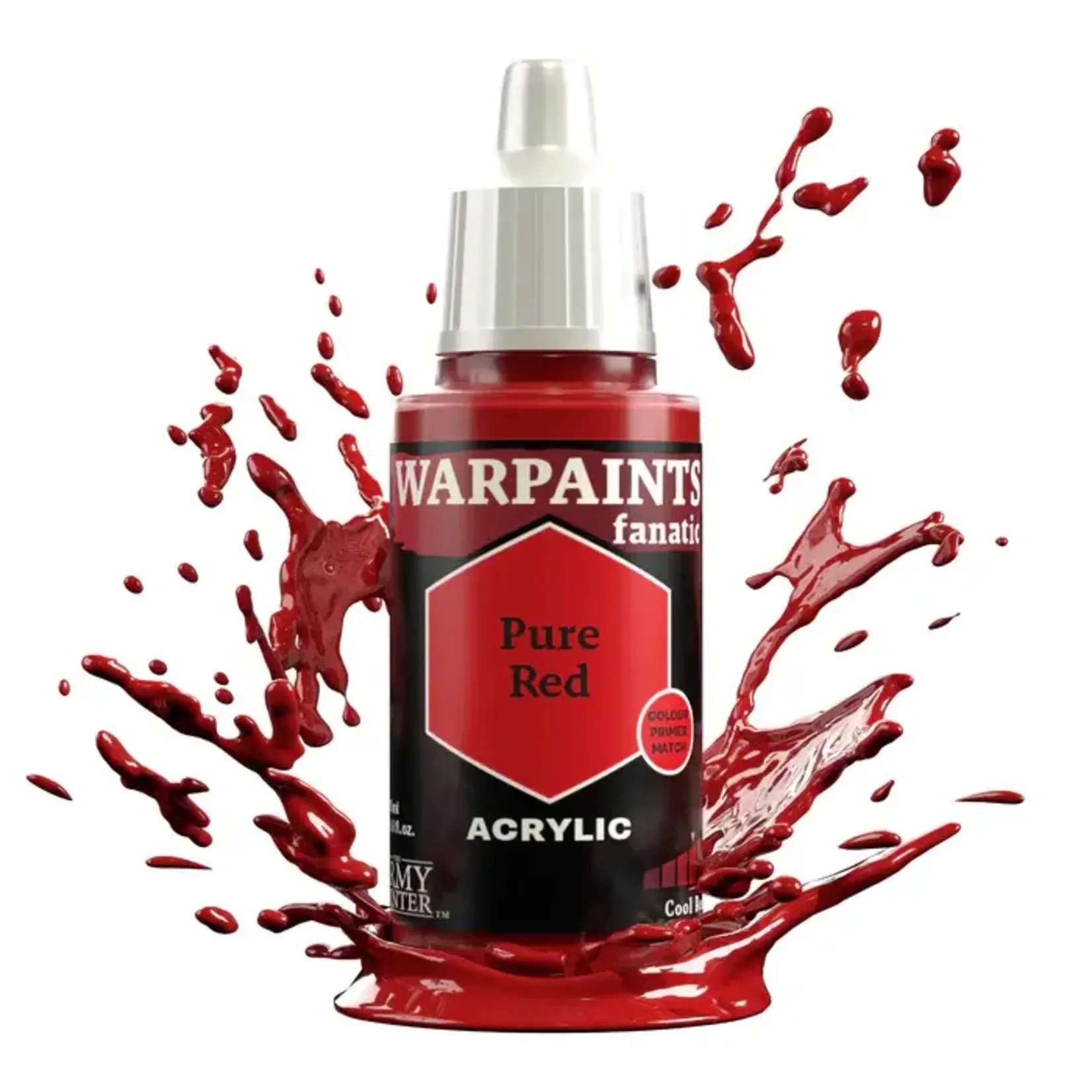Paint the fierce scales of a dragon, the rich silk of noble garments, or the delicate petals of flowers with the Flexible Triad: Cool Reds. The paints in this triad are also perfect for depicting the oozing flow of blog. Whether enhancing natural elements with a flush of life or adding supernatural flair, these paints will help your miniatures stand out on the gaming table.
The Cool Reds Triad is suitable for projects across all genres of miniature painting, from historical and military figures to fantasy creatures and sci-fi models.
The Flexible Triad: Cool Reds consists of:
- Warpaints Fanatic: Basilisk Red
- The Warpaints Fanatic: Basilisk Red is a dark purplish red that is designed to be the perfect base colour for cool reds. It’s the darkest tone from the “Cool Reds” Flexible Colour Triad and its Practical Colour Name is “Dark Purplish Red”.
- Warpaints Fanatic: Wyvern Fury
- The Warpaints Fanatic: Wyvern Fury is a deep purplish red that works well as a base coat or early highlight colour. It’s the second-darkest tone from the “Cool Reds” Flexible Colour Triad and its Practical Colour Name is “Deep Purplish Red”.
- Warpaints Fanatic: Dragon Red
- The Warpaints Fanatic: Dragon Red is a vivid purplish red that is a match to the Warpaints Air and Colour Primer of the same name. It’s one of the two middle tones from the “Cool Reds” Flexible Colour Triad and its Practical Colour Name is “Vivid Purplish Red”.
- Warpaints Fanatic: Pure Red
- The Warpaints Fanatic: Pure Red is a vivid red that is a match to the Warpaints Air and Colour Primer of the same name. It’s one of the two middle tones from the “Cool Reds” Flexible Colour Triad and its Practical Colour Name is “Vivid Red”.
- Warpaints Fanatic: Blood Chalice
- The Warpaints Fanatic: Blood Chalice is a brilliant red is well suited for light, bright layers and highlights. It’s the second-lightest tone from the “Cool Reds” Flexible Colour Triad and its Practical Colour Name is “Brilliant Red”.
- Warpaints Fanatic: Raging Rose
- The Warpaints Fanatic: Raging Rose is a light red that is perfect to be used as a final highlight for your cool reds. It’s the lightest tone from the “Cool Reds” Flexible Colour Triad and its Practical Colour Name is “Light Red”.
The Flexible Colour Triad System is a segment, or family, of six colours that range from dark to light with a consistent hue. This system allows you to easily select paints that create a natural colour progression on your miniatures. This is an easy way to create a colour scheme for your miniature when army painting because you always have 27 Flexible Triads to choose from instead of mixing colours.
The system builds upon the traditional triad system by introducing more versatility and adaptability in colour selection, expanding the conventional three colours to six. This gives you almost endless possibilities for putting colours together within the triad.
When using a triad system, you usually select 3 colours (a base, a shade, and a highlight), depending on the level of contrast you want on your miniature. For instance, for minimal contrast, opt for 3 adjacent colours to achieve a smooth colour transition. For maximum contrast, use the lightest, middle, and darkest colour available in the flexible triad.








